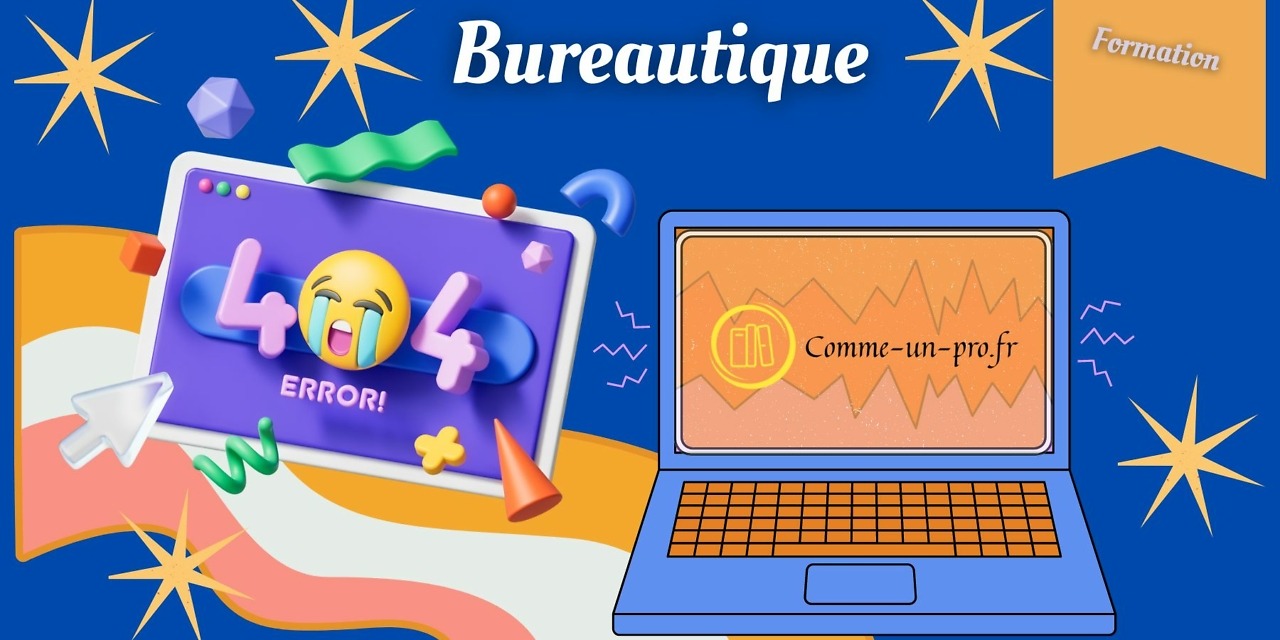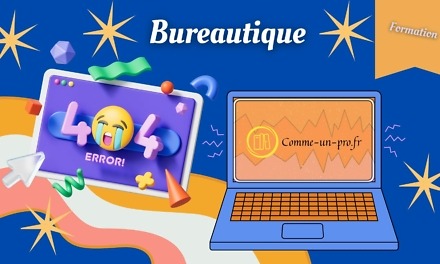Mastering the Google Workspace: A Step-by-Step Guide for Admin Professionals
You are an administration professional and you want Master the Google Workspace ? Do not search anymore ! In the digital age, mastering the Google workspace is key to staying organized, collaborating effectively, and maximizing productivity. Whether you're a seasoned pro or just starting out, this step-by-step guide is designed to help you navigate the ins and outs of the Google workspace like a true expert. From mastering Gmail and Google Drive to becoming a Google Docs and Google Sheets expert, this comprehensive guide covers it all. With easy-to-follow instructions, helpful tips, and practical examples, you'll be well-equipped to streamline your tasks, improve your communication, and increase your efficiency. So get ready to take your admin skills to the next level and become a Google workspace guru. Let's dive into the adventure and exploit the full potential of this powerful suite of tools!
Benefits of Using Google Workspace for Administrative Professionals
Google Workspace offers many benefits to administrative professionals. First of all, it allows you to centralize all the tools necessary for your daily work in one place. Whether it's managing email, storing and sharing files, collaborating on documents, or hosting meetings, you'll find everything you need in Google Workspace.
In addition, the Google workspace offers great flexibility in terms of collaboration. You can easily invite colleagues to work on a document in real time, making it easier to coordinate and communicate within your team. Additionally, Google workspace allows you to work remotely, which has become essential in today's world.
Finally, the Google Workspace is continually updated and improved by Google. That means you'll always get the latest features and best performance. You won't have to worry about maintenance or updates, because Google takes care of all that for you.
In summary, using Google Workspace provides many benefits for administrative professionals, ranging from centralization of tools to collaboration flexibility and continuous updating.
Google workspace account setup
The first step to mastering the Google workspace is to set up your account. To get started, you'll need to create a Google account if you don't already have one. This can be done in a few simple steps:
1. Go to the Google account creation page.
2. Fill in the required information, such as your name, email address, and a password.
3. Accept the Terms of Service and Privacy Policy.
4. Follow the instructions to verify your account, such as entering a verification code sent to your email address.
Once you've set up your account, you can access Google Workspace by logging in with your credentials. Make sure to keep your password safe and choose a strong password to protect your account.
Now that you've set up your account, let's explore the Google Workspace interface and learn how to navigate its various features.
Navigating the Google Workspace interface
The Google Workspace interface is designed to be intuitive and user-friendly. When you log in, you'll see a dashboard that gives you an overview of your apps and recent activity. You can customize this dashboard by adding or removing widgets according to your needs.
In the top navigation bar, you will find all the main Google workspace tools, such as Gmail, Google Drive, Google Docs, Google Sheets, Google Slides, Google Calendar, Google Meet, Google Chat, Google Tasks, Google Keep, etc. Click on the corresponding icon to access the desired tool.
In addition to the top navigation bar, you will also find a side menu that allows you to quickly access other features and options. For example, you can find additional settings, third-party integrations, and keyboard shortcuts.
Navigating the Google Workspace interface is simple and intuitive. Take the time to familiarize yourself with the different features and menus, as this will help you maximize your productivity.
Understanding and using Google Drive for file management
Google Drive is one of the most powerful tools in the Google workspace for managing files. It lets you store and share files online, making it easy to collaborate and access your files from anywhere.
For starters, you can create folders in Google Drive to organize your files. For example, you can create a folder for each project or each client. To create a folder, click the "New" button in Google Drive, then choose "Folder." Give your folder a name and click “Create”.
Once you have created folders, you can add files to them by dragging and dropping them directly into the corresponding folder. You can also import files from your computer by clicking the “Import” button in Google Drive.
In addition to storing files, Google Drive also lets you collaborate on documents in real time. For example, you can create a Google Docs document and invite colleagues to work on it with you. You can all edit the document at the same time and see the changes live. This facilitates collaboration and avoids confusion related to different versions of documents.
Use Google Drive to efficiently store, organize and share your files. You can also use search features to quickly find specific files and sharing options to control who can access your files.
Collaborate in real time with Google Docs, Sheets and Slides
Google Docs, Google Sheets, and Google Slides are essential productivity tools in the Google workspace. They let you create, edit, and collaborate on documents, spreadsheets, and presentations in real time.
When you create a Google Docs document, Google Sheets spreadsheet, or Google Slides presentation, you can add text, images, tables, charts, and more to it. These tools offer great flexibility in terms of formatting and customization.
One of the major benefits of Google Docs, Sheets, and Slides is the ability to collaborate in real time. You can invite colleagues to work on a document with you, and you can all make changes at the same time. This facilitates coordination and communication within your team.
In addition to real-time collaboration, Google Docs, Sheets, and Slides also offer advanced features like commenting, editing suggestions, and reviews. These features allow you to get feedback from others and track document changes over time.
Use Google Docs, Sheets, and Slides to create and collaborate on documents efficiently. Experiment with the different features and options to get the most out of these powerful tools.
Efficient email management with Gmail
Gmail is one of the most popular and powerful email services in the world, and it's integrated with the Google workspace. As an administrative professional, managing email effectively is key to staying organized and productive.
Gmail offers many features to help you manage your emails efficiently. Here are some tips for getting the most out of Gmail:
1. Use labels: Labels are a powerful feature of Gmail that lets you organize your emails into categories. For example, you can create labels such as “Priority”, “To be processed”, “Awaiting response”, etc. to sort your emails by importance or status.
2. Define filters: Filters allow you to automate certain actions on your emails. For example, you can create a filter to automatically move emails from a specific sender to a specific label, or to mark certain emails as important.
3. Use Suggested Replies: Gmail offers suggested replies that allow you to quickly reply to an email with short sentences. It can save your time when you have to answer many emails.
4. Activate the “Reply on hold” function: The “Reply on hold” function allows you to write a reply to an e-mail and schedule it to be sent later. This can be useful when you want to reply to an email at a specific time, such as when you're on the go.
Use these tips to manage your emails effectively with Gmail. Remember to regularly clean your inbox by deleting unnecessary emails or archiving them.
Organization and planning with Google Calendar
Google Calendar is a powerful scheduling tool that lets you manage your schedule and stay organized. As an administrative professional, scheduling is key to managing meetings, appointments, and tasks.
Google Calendar lets you create events and reminders, organize them into different categories, and share them with other people. Here are some tips for getting the most out of Google Calendar:
1. Use the different views: Google Calendar offers different views, such as daily, weekly and monthly view. Use these views to visualize your schedule in different ways and plan accordingly.
2. Add details to events: When you create an event, add details such as location, description, and attendees. This will help you keep all important information in one place.
3. Share your calendar: You can share your calendar with others, which makes team coordination and planning easier. You can also accept event invitations and add them directly to your calendar.
4. Use Reminders: Reminders are a useful feature of Google Calendar to remind you of important tasks or deadlines. You can set up reminders via email, push notification or SMS.
Use Google Calendar to organize your schedule and stay on top of your tasks and appointments. Regularly plan your schedule and update your calendar as changes occur.
Simplify communication with Google Meet and Chat
Effective communication is essential for administrative professionals, and Google Meet and Google Chat are powerful tools for simplifying communication within your team.
Google Meet is a video conferencing tool that allows you to hold virtual meetings with colleagues, clients or partners. You can create meetings, invite participants and share your screen to collaborate in real time.
Google Chat is an instant messaging tool that allows you to communicate with your colleagues in real time. You can create chat rooms, send individual or group messages, and share files.
Use Google Meet to host virtual meetings when you need to collaborate with people remotely. Use Google Chat for quick and informal communications with your colleagues.
Improve your productivity with Google Tasks and Google Keep
In addition to communication, efficient task management is another crucial pillar for administrative professionals. That's where Google Tasks and Google Keep come in, offering robust solutions to boost your productivity.
Google Tasks is a task management tool that lets you create and track to-do lists, set due dates, and sync your tasks with your Google calendar.
It's great for managing complex projects, keeping track of daily tasks, and never missing a deadline. On the other hand, Google Keep is a note-taking tool that lets you quickly capture ideas, create to-do lists, and share notes with others.
It's perfect for organizing your thoughts, keeping track of important information, and collaborating on ideas with your team. By combining Google Tasks for task management and Google Keep for note taking, you can maximize your productivity and stay organized in your daily administrative work.



